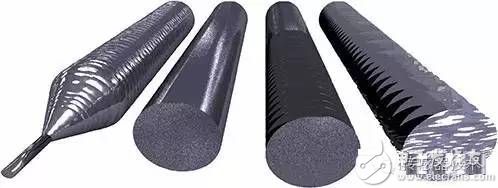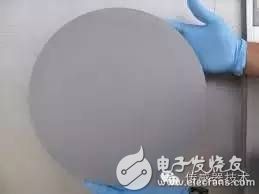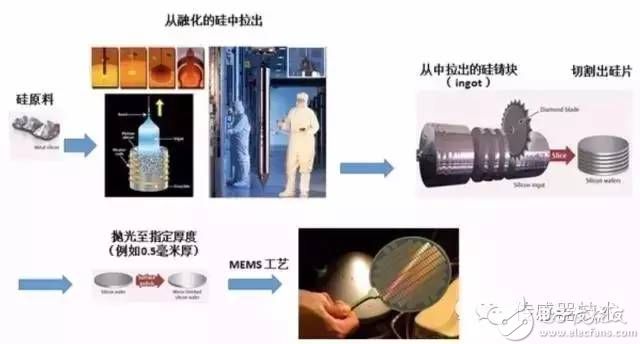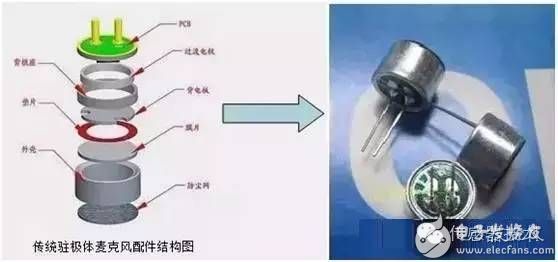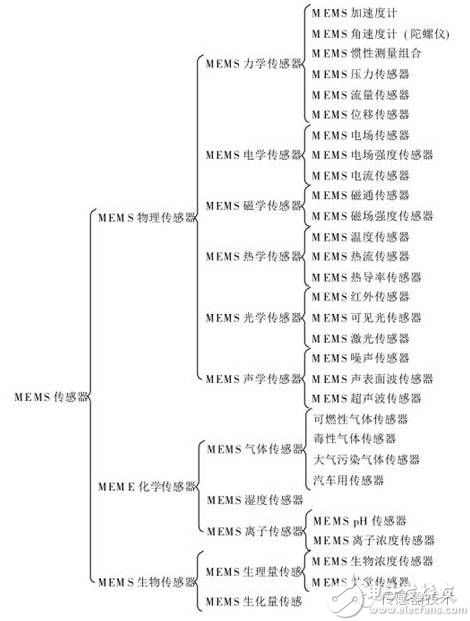The development of sensors to today, miniaturization, intelligence, and integration has become the only way to upgrade. Today, let's introduce the MEMS sensor , the mini-type of the sensor family . What is a MEMS sensor? The full name of MEMS is Micro-ElectroMechanical System, which is a mass-produced system that integrates micro-mechanisms, micro-sensors, micro-actuators, and signal processing and control circuits up to interfaces, communications, and power supplies. A tiny device or system on one or more chips. The MEMS sensor is a new type of sensor manufactured using microelectronics and micromachining technology. MEMS is an advanced manufacturing technology developed on the basis of semiconductor manufacturing technology using traditional semiconductor processes and materials. The interdisciplinary phenomenon is extremely obvious, mainly involving micromachining technology, mechanical/solid acoustic wave theory, heat flow theory, electronics. , materials, physics, chemistry, biology, medicine, etc. After more than 40 years of development, it has become one of the major scientific and technological fields in the world. Processing technology: MEMS technology is based on already mature microelectronics, integrated circuit technology and its processing technology. It has many similarities with traditional IC processes, such as photolithography, thin film deposition, doping, etching, chemical mechanical polishing processes, etc., but some complex microstructures are difficult to implement with IC technology and must be fabricated using micromachining technology. Micromachining technologies include bulk micromachining of silicon, surface micromachining and special micromachining. Body processing technology refers to a process of etching a silicon substrate along the thickness direction of a silicon substrate, including wet etching and dry etching, which is an important method for realizing a three-dimensional structure. Surface micromachining uses a thin film deposition, photolithography, and etching process to deposit a structural layer film on a sacrificial layer film and then remove the sacrificial layer release structure layer to achieve a movable structure. In addition to the above two micromachining technologies, MEMS manufacturing also widely uses a variety of special processing methods, including common methods including bonding, LIGA, electroplating, soft lithography, micro-die casting, micro-stereolithography and micro-EDM processing. Wait. Application materials: Silicon-based materials: Most of the integrated circuit and MEMS raw materials are silicon (Si), a magical Group VI element that can be extracted from silica in large quantities. What is silica? The popular point is sand. After a series of complicated processing, Sand Jun became monocrystalline silicon, which looks like this: This long, large pillar can be 1 inch (2.5 cm) to 12 inch (30 cm) in diameter and cut into layers of 500 micron thick silicon (English: wafer, and wafer). This looks like: The silicon-based material has excellent electrical properties. The strength, hardness and Young's modulus of the silicon material are comparable to those of iron. The density is similar to that of aluminum, and the thermal conductivity is close to that of molybdenum and tungsten. If a single MEMS sensor chip has an area of ​​5 mm x 5 mm, an 8 inch (20 cm diameter) wafer can cut about 1000 MEMS sensor chips, and the cost of sharing each chip can be greatly reduced. Non-silicon materials: In recent years, MEMS materials have been gradually replaced by non-silicon materials, and academic researchers are now focusing on the development of polymer and paper-based micro devices. Devices developed with these materials are not only environmentally friendly, but also simple to manufacture and low in cost. Relative to silicon materials, they have significantly reduced the R&D budget. Innovations in many polymer and paper-based microdevices point to medical applications where biocompatibility and material flexibility are essential requirements. The functional and performance development of paper-based and polymer micro-devices is still at a relatively early stage, and the production facilities for such devices have not yet been developed. The maturity and commercialization of these new technologies may take more than 10 years. Therefore, there is still a lot of innovation work to be done on the research of micro-devices based on silicon materials, otherwise the risk of development stagnation will be faced. Technical advantages: The use of MEMS technology to manufacture sensors, actuators or microstructures is characterized by miniaturization, integration, intelligence, low cost, high performance, and mass production. The production capacity is high and the yield is high. MEMS technology has enabled tens of thousands of MEMS chips (some processes will also process integrated circuit chips in the same step) on each wafer, as shown in the following figure. This batch process is now fully automated, which isolates human factors and ensures that process tolerances between each MEMS chip are tightly controlled, thereby increasing yield. After slicing and packaging, it becomes a MEMS chip. In appearance, most MEMS chips and integrated circuit chips are similar. In summary, the micron-sized feature size allows MEMS sensors to perform functions not possible with some conventional mechanical sensors. It is the main force of miniature sensors and is gradually replacing traditional mechanical sensors. It is widely used in various fields such as consumer electronics, automotive, aerospace, machinery, chemical and pharmaceutical. Common products include pressure sensors, accelerometers, gyros, electrostatically actuated light projection displays, DNA amplification microsystems, and catalytic sensors. The difference with traditional sensors: In the picture below, take the microphone as an example to get a clearer understanding of the difference between a traditional microphone and a MEMS microphone. Traditional electret microphone: MEMS microphone: In the figure, seven or eight mechanical parts of the traditional microphone are all integrated into a small MEMS sensor chip, which is very small and very light. Because it is chip manufacturing, it has good consistency, low power consumption, and is easier to mass produce. But the technical requirements are very high. The emergence of MEMS sensors has greatly satisfied everyone's requirements for small size and high performance. Classification of MEMS sensors The MEMS sensor can not only sense the measured parameters, but also convert it into a signal that is convenient for measurement; and can analyze, process, recognize, and judge the obtained signal, so it is called a smart sensor. There are many types of MEMS sensors, and there are many ways to classify them. The following is categorized according to the working principle: Each MEMS sensor has a variety of subdivision methods. Such as accelerometers, according to the detection of the quality of the movement, angular vibration and line vibration accelerometer, etc., common MEMS sensors are pressure sensors, acceleration sensors, micro-mechanical gyroscopes, inertial sensors, MEMS silicon microphones, etc.; MEMS The variety of sensors can be as many as 10,000 units, and there are many parameters between different MEMS, and there is no complete standard process. MEMS process As an important symbolic industry of international competition strategy, MEMS sensor has attracted the attention of all countries in the world due to its high technical content and broad market prospects. In the past ten years, China's MEMS sensor industry ecosystem has been gradually improved. From research and development, design, foundry, packaging and testing to application, the complete industrial chain has basically formed, and the state has also given unprecedented policy support to the MEMS sensor industry. The development of China's MEMS industry is facing major opportunities, especially the rapid development of mobile Internet and Internet of Things, which will have a profound impact on the MEMS industry, and will spawn a large number of new products and applications, driving MEMS products in daily life and industry. Popularization in production. Miniature Compression Force Sensor Miniature Button Load Cells is a device that converts the magnitude of a force into an associated electrical signal. It also called Force Sensor,force transducer, small load cells are designed for compression and known for their small package size. They are used in tight and limited spaces. General purpose ones are normally designed with diaphragm construction but some higher precision ones are designed with bending beams for low capacity and shear or column design for higher capacity.
Miniature button load cells are available in various capacities ranging from 5N to 200KN and in packages ranging from 8mm to 51mm OD. (can customized the Load Cell size) , the force sensors are widely used in Medical applications as well as automation where small size is a must and space is limited. For detecting mechanical forces such as tension, tension, pressure, weight, torque, internal stress and strain. As industrial automation continues to increase, load cells will play an increasing role.
Force Sensor,force transducer,button load cell,Force washers sensor,miniature load cell GALOCE (XI'AN) M&C TECHNOLOGY CO., LTD. , https://www.galoce-meas.com